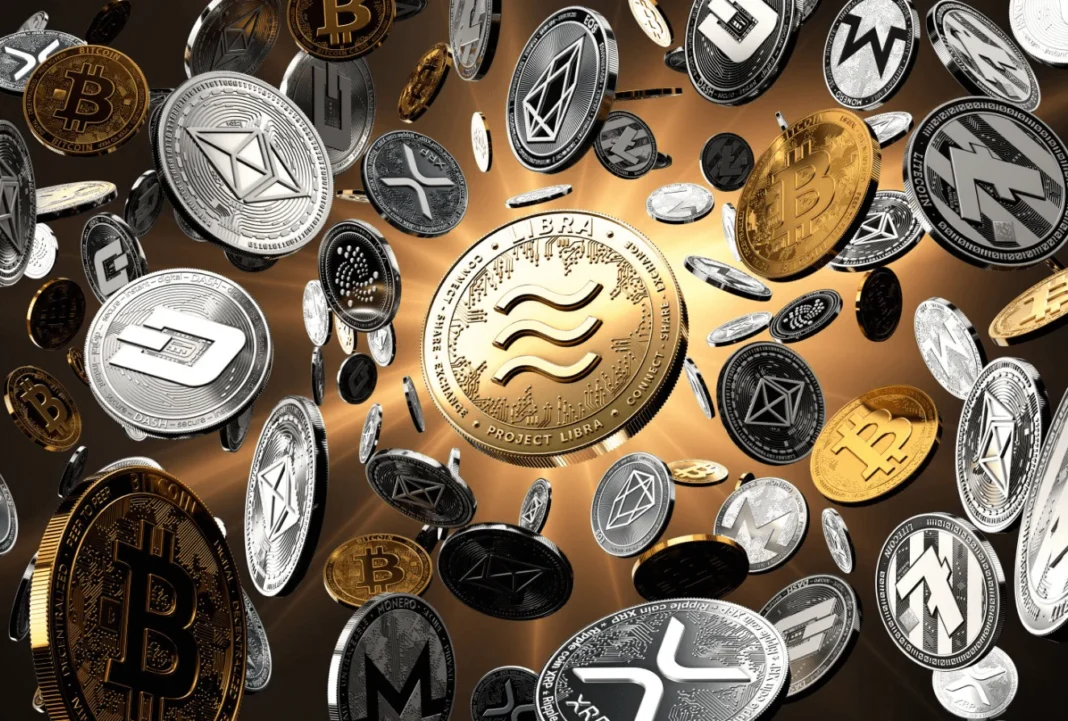1. Introduction: The Ever-Evolving World of Crypto
In the fast-paced crypto ecosystem, staying ahead of trends is key for investors, developers, and enthusiasts. Over the past decade, we’ve seen blockchain go from a niche concept to a transformative technology influencing global finance, data security, and more. The next five years hold immense potential, with projects focusing on scalability, interoperability, and user adoption poised to lead the market. This article explores the most promising crypto projects expected to gain traction in 2025 and explains why these technologies could drive the next wave of digital innovation.
2. Criteria for Dominance: What Makes a Project Stand Out?
What sets apart a successful crypto project? In 2025, we expect that projects combining high utility, scalability, security, and real-world applications will hold the most value. A large and active user base, along with community support and developer interest, will also be pivotal. The regulatory environment plays a vital role, too—projects that align with emerging regulations may achieve the most growth as they appeal to mainstream users and institutional investors. These criteria set the framework for the projects discussed in this article.
3. Layer 1 Protocols: Building the Backbone of Blockchain
Layer 1 protocols, also known as base-layer blockchains, form the foundation for many applications. They are responsible for transaction validation, security, and the structure that allows dApps (decentralized applications) to operate. The following Layer 1 protocols have shown great promise in terms of speed, security, and developer interest:
- Ethereum 2.0: Ethereum’s transition to Proof of Stake (PoS) through the Ethereum 2.0 upgrade addresses the scalability issues that have historically plagued the network, potentially making it the go-to for dApp developers.
- Solana: Known for its lightning-fast transactions and low fees, Solana is a developer-friendly chain that has garnered attention for its scalability without compromising on security.
- Polkadot: Focused on interoperability, Polkadot allows multiple blockchains to transfer messages and value in a trust-free way, an attractive feature for developers seeking flexibility across networks.
Each of these projects aims to attract more developers, enterprise users, and users by improving the technology, security, and ease of use of Layer 1 platforms.
4. The Rise of Layer 2 Scaling Solutions
Layer 2 solutions aim to solve issues that Layer 1 blockchains, like Ethereum, face, particularly scalability. As dApp adoption grows, Layer 2 solutions will likely become indispensable in the coming years. Here are some promising Layer 2 solutions to keep an eye on:
- Polygon: A popular choice for Ethereum scaling, Polygon’s sidechains allow for faster and cheaper transactions. With a vast ecosystem and strong partnerships, it could dominate Layer 2 by 2025.
- Arbitrum and Optimism: Both using optimistic rollups, Arbitrum and Optimism enable Ethereum to handle more transactions at a fraction of the cost. As demand for Ethereum-compatible solutions grows, so might these protocols.
These Layer 2 solutions will play a crucial role in the adoption of Web3, DeFi, and NFTs as they enable seamless, affordable transactions on high-demand blockchains.
5. Decentralized Finance (DeFi): Revolutionizing Traditional Finance
DeFi continues to redefine financial services, making them more accessible and inclusive. By 2025, DeFi projects are expected to become more user-friendly and compliant with regulations, driving mass adoption. Some key projects to watch include:
- Aave: A pioneer in DeFi lending, Aave allows users to lend and borrow assets in a decentralized manner. With a robust governance structure, it’s well-suited to grow within regulatory frameworks.
- Uniswap: As the leading decentralized exchange (DEX) on Ethereum, Uniswap’s model has inspired a host of innovations in the DeFi space, from governance tokens to automated market makers.
- MakerDAO: Maker’s stablecoin, DAI, has proven resilient and widely adopted, marking it as a staple in the DeFi ecosystem.
These projects will likely expand into new financial services areas, making DeFi a significant part of the global financial landscape.
6. NFT and Metaverse Platforms: Beyond Collectibles
NFTs (non-fungible tokens) have moved beyond digital art and collectibles to play a significant role in sectors like gaming, real estate, and even social media. As NFTs evolve, they’re expected to fuel the growth of the metaverse, where virtual economies will flourish. Here’s what to watch:
- Flow: Designed by Dapper Labs, the creator of NBA Top Shot, Flow is optimized for games and NFTs, making it an attractive platform for creators.
- Tezos: Known for its energy efficiency and on-chain governance, Tezos is gaining traction as an eco-friendly alternative in the NFT space.
- Decentraland: As a metaverse platform, Decentraland allows users to buy, sell, and create virtual real estate and digital assets, leading the way in the metaverse landscape.
NFT platforms are set to shape the digital economy of the future, with applications in gaming, real estate, and beyond.
7. Privacy-Centric Projects: Balancing Transparency with Privacy
Privacy-focused projects will be more critical than ever as privacy concerns grow. Blockchain projects that address these concerns will likely see increased demand. Key privacy-centric projects include:
- Monero: Known for its robust privacy features, Monero provides anonymous transactions, an important feature in regions with limited financial freedoms.
- Zcash: Offering users the choice between transparent and shielded transactions, Zcash caters to both privacy advocates and those who value compliance.
With privacy increasingly in the spotlight, privacy coins may continue to see substantial growth, even amidst regulatory challenges.
8. Interoperability and Cross-Chain Technology: Building Bridges
Cross-chain technology enables different blockchains to interact, creating a more interconnected and functional ecosystem. The following projects are working on this interoperability:
- Cosmos: Cosmos’ goal is to create an “Internet of Blockchains,” allowing different blockchains to share data seamlessly.
- Polkadot: In addition to being a Layer 1 protocol, Polkadot’s parachains enable cross-chain transfers, a key advantage in creating a connected blockchain ecosystem.
- ThorChain: ThorChain allows the cross-chain exchange of assets without centralized intermediaries, which could be transformative for DeFi.
Interoperability will be crucial for a future where blockchain networks work together, making decentralized solutions more accessible.
9. AI and Blockchain Integration: The Future of Smart Technology
AI and blockchain could merge to create powerful applications in data sharing, supply chain automation, and smart contracts. Notable projects combining AI and blockchain include:
- Fetch.ai: An AI-based platform for autonomous economic agents that perform various tasks, such as predictive analytics and decentralized finance services.
- SingularityNET: This decentralized AI network allows users to create, share, and monetize AI services, opening doors for AI-driven dApps.
The combination of AI and blockchain could automate processes across sectors, creating a new paradigm in how we manage and interact with data.
10. The Role of Stablecoins and CBDCs in a Crypto-Driven Economy
Stablecoins are crucial for financial stability in crypto and DeFi, offering a bridge to traditional finance. Key players to watch:
- USDC: Known for its transparency and regulatory compliance, USDC is widely used in DeFi and as a fiat on-ramp.
- CBDCs: With central banks worldwide researching digital currencies, CBDCs may play a pivotal role in financial inclusion and economic stability.
These assets are set to redefine digital economies, with stablecoins acting as the backbone of DeFi and CBDCs potentially offering state-backed alternatives.
11. The Regulatory Landscape in 2025: Friend or Foe?
As governments regulate cryptocurrency, projects with strong governance and transparency will be better positioned to thrive. Regulatory changes could impact DeFi, privacy coins, and stablecoins, making compliance a key factor for success in the crypto space.
12. What to Watch and Why It Matters
As the crypto market continues to grow, adaptability will be key for projects aiming to thrive. By focusing on scalability, privacy, interoperability, and regulatory compliance, these next-generation projects are set to redefine the future of finance, technology, and the digital economy.














